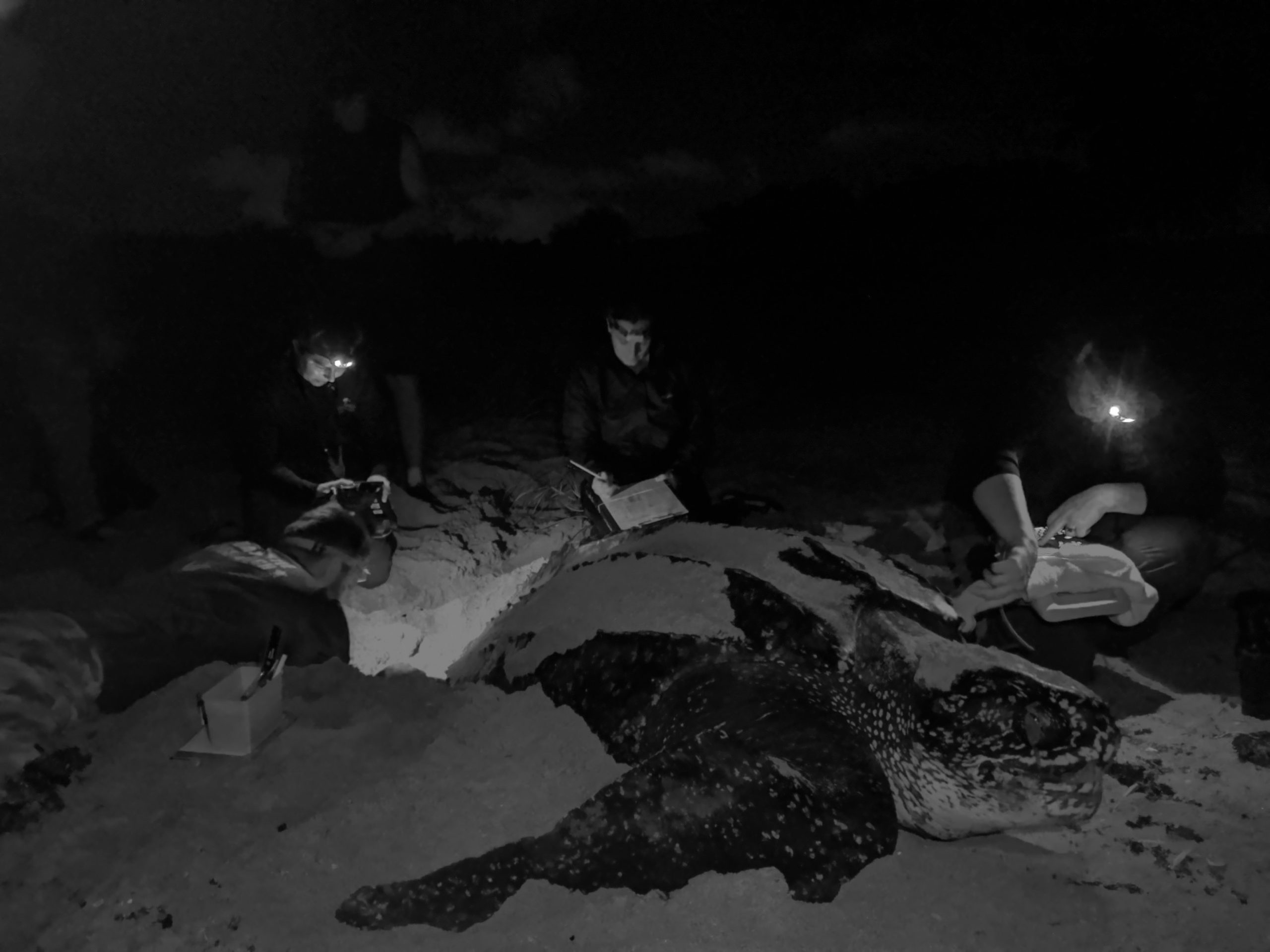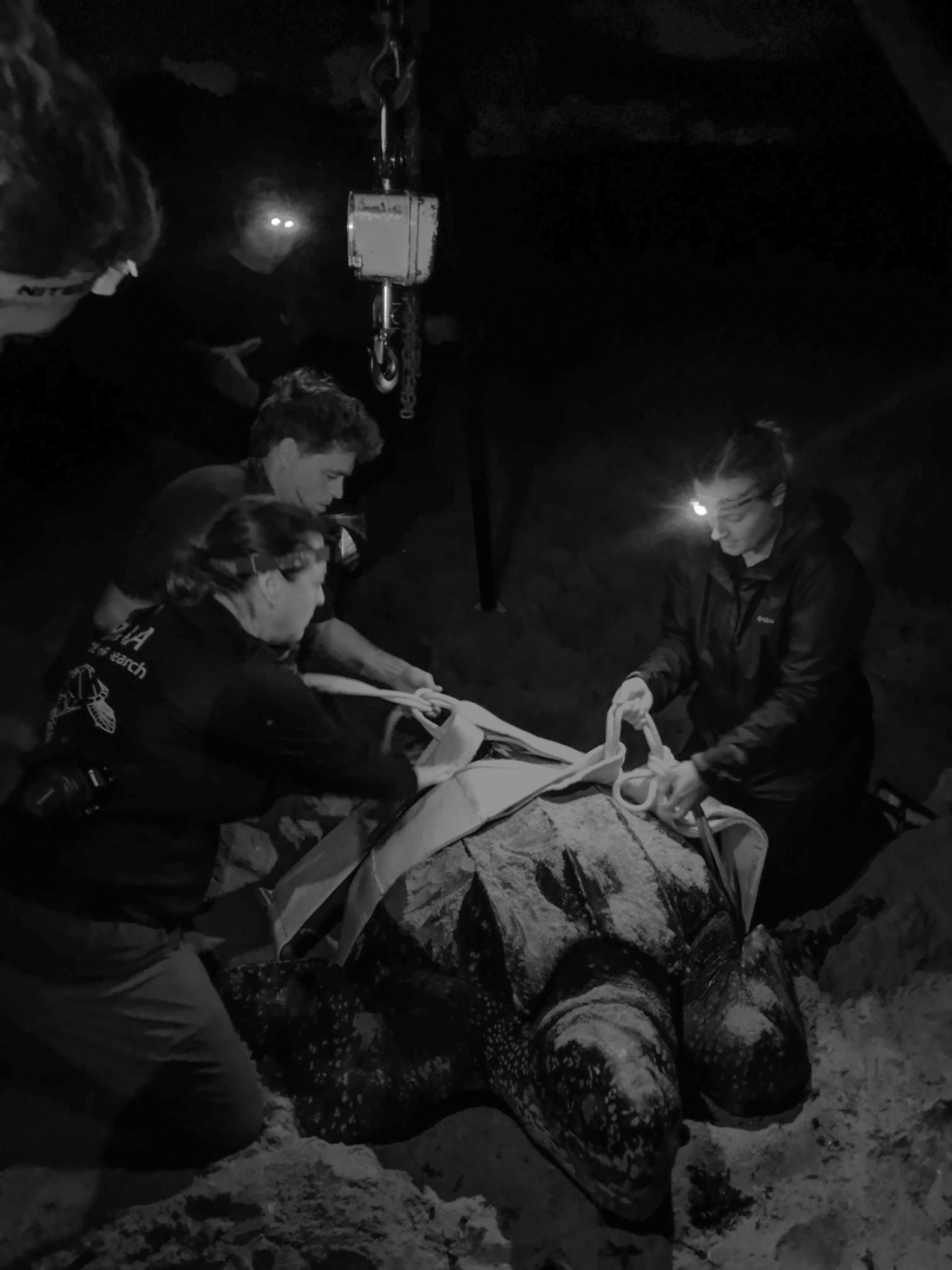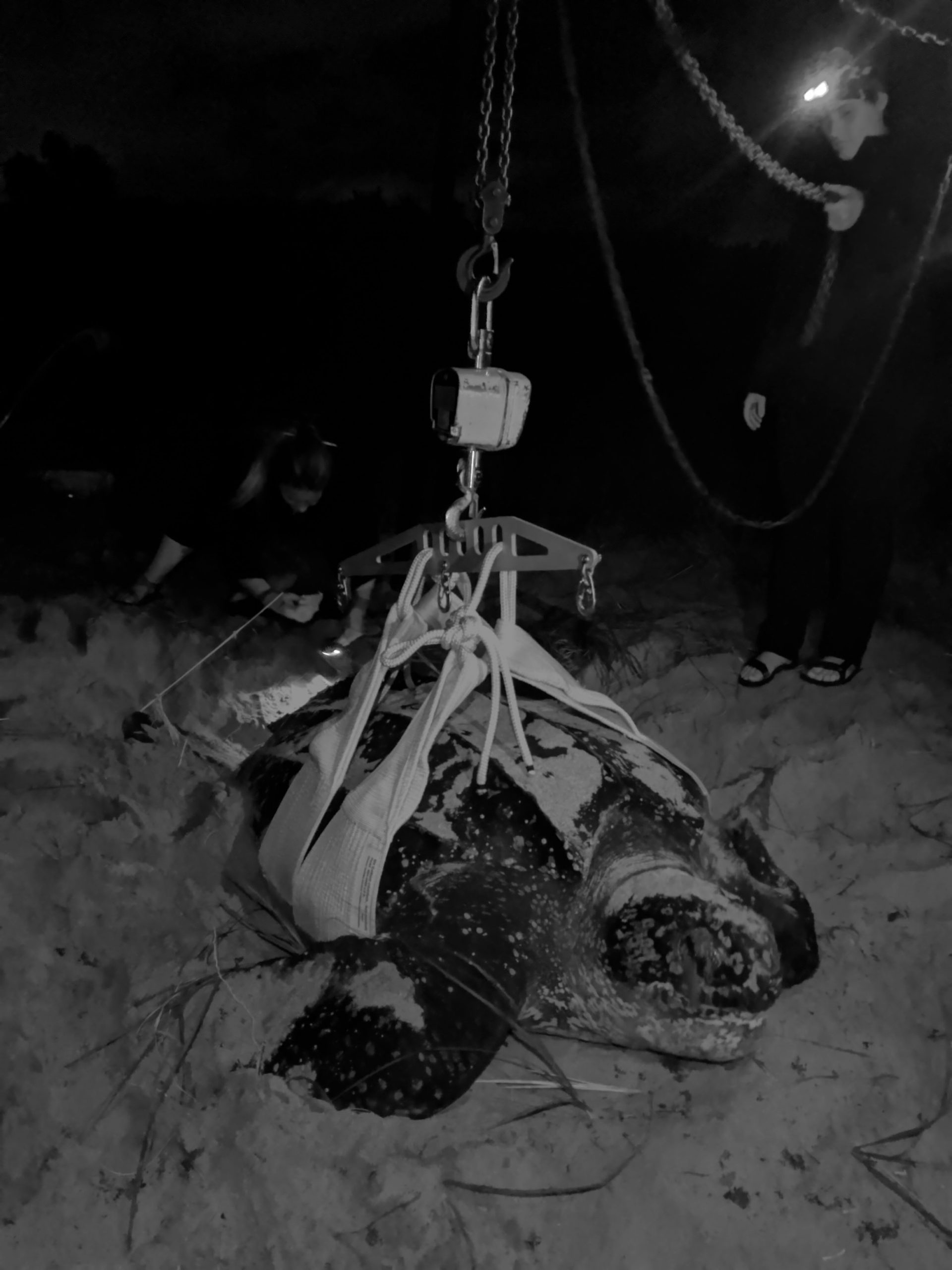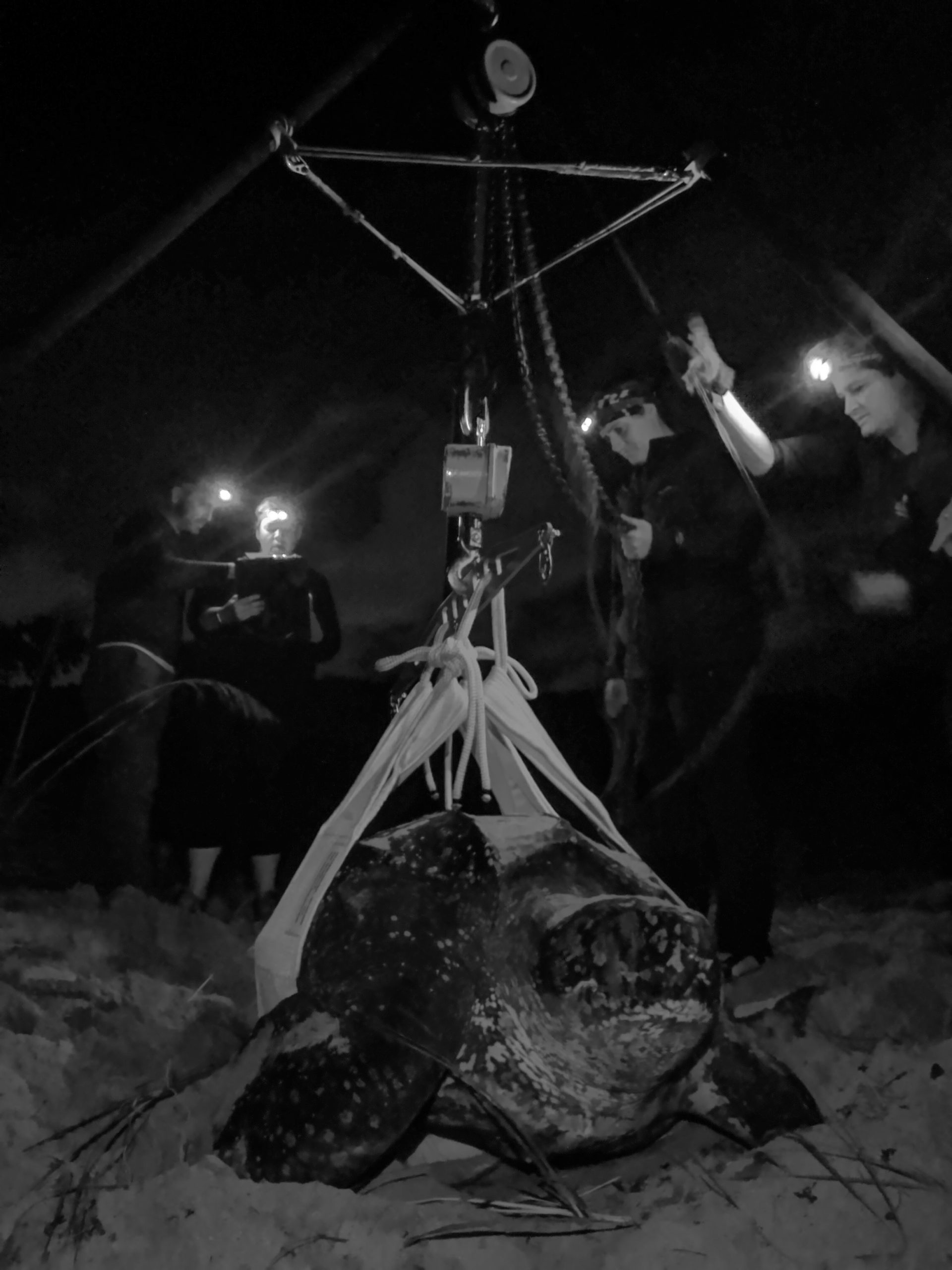This has been a special and extremely exciting week for our night crew on Juno Beach. In collaboration with Upwell, a California based marine research and conservation 501(c)3 nonprofit, and Cal Poly San Luis Obispo, we have been able to help weigh nesting leatherback turtles!! Our goal is to examine and score the body condition of the nesting females at this point in the nesting season as well as finding a baseline weight for this population.
The process is fairly intensive and involves all hands on deck! Once the crew encounters a turtle, LMC staff collects our normal samples: blood, a skin biopsy, and measurements.

As we collect our samples, two to four people dig a trench under the turtle at approximately her CCW (curved carapace width), or the widest part of her body, and two straps are fed under her and secured with rope. Then we attach the rope to a spreader bar, which is attached to a scale, which is attached to a pulley, which is all connected to an 11 ft. carbon fiber tripod that we place over the turtle.


Once she is starts to cover her egg chamber with her rear flippers, one person will use the pulley and lift the turtle off the ground, which in most cases, means digging under the turtle even more to ensure her massive front and rear flippers are not touching the sand.


After we get an accurate weight, we gently lower the turtle, remove all of the gear, re-group, and hop back on our ATVs to find another!
Over the duration of this exciting research, Upwell and LMC were able to weight six individual turtles!! The heaviest leatherback was June Bug, who came in at an astonishing 412 kg (908 lbs.)!! This was also the second time we saw her this season. Sydney Tuttle was the lightest at 262.8 kg (579 lbs). The remaining four females that we weighed were Marilyn (275.6 kg/607 lbs.), Panda (303. 9 kg/670 lbs.), Phoenix (352.8 kg/777 lbs.), and Gisli (370 kg/815.71 lbs.).
And that’s a wrap on this week. Special thanks to Dr. George Shillinger and Dr. Heather Harris of Upwell for allowing LMC to assist in their leatherback body condition research, to Dr. Heather Liwanag of Cal Poly for loaning her tripod and scale, and to everyone else who lent a hand in this fascinating project.
Disclaimer: All marine turtle images taken in Florida were obtained with the approval of the U.S. Fish & Wildlife Service (USFWS) and the Florida Fish & Wildlife Conservation Commission (FWC) under conditions not harmful to this or other turtles. Images were acquired while conducting authorized research activities pursuant to FWC MTP-19-205.
